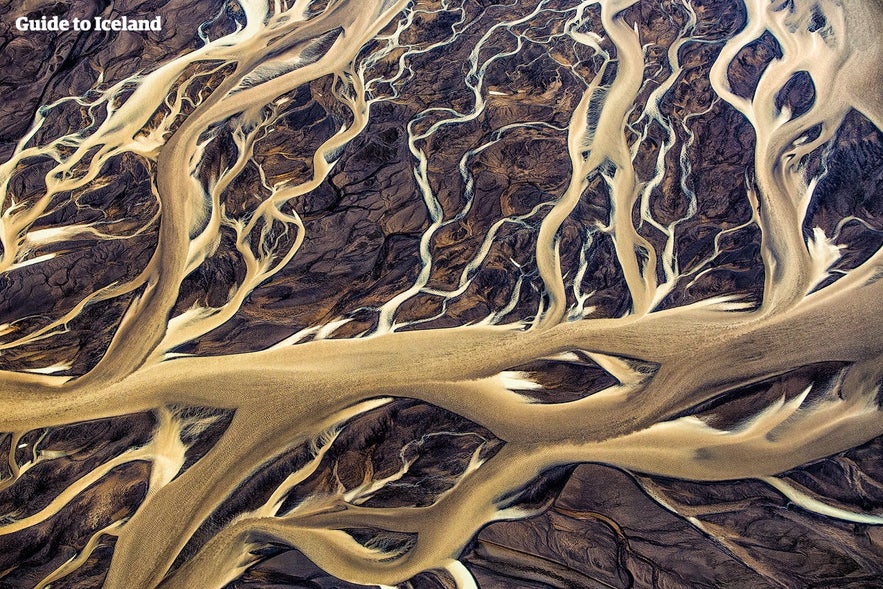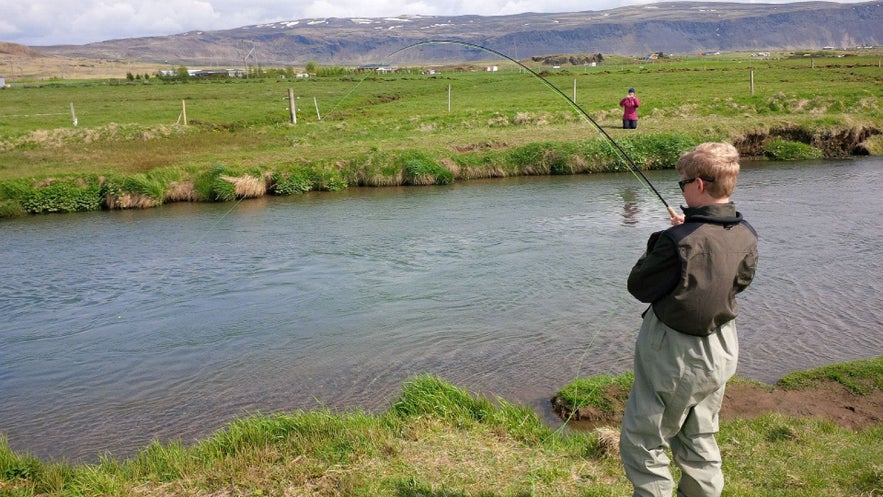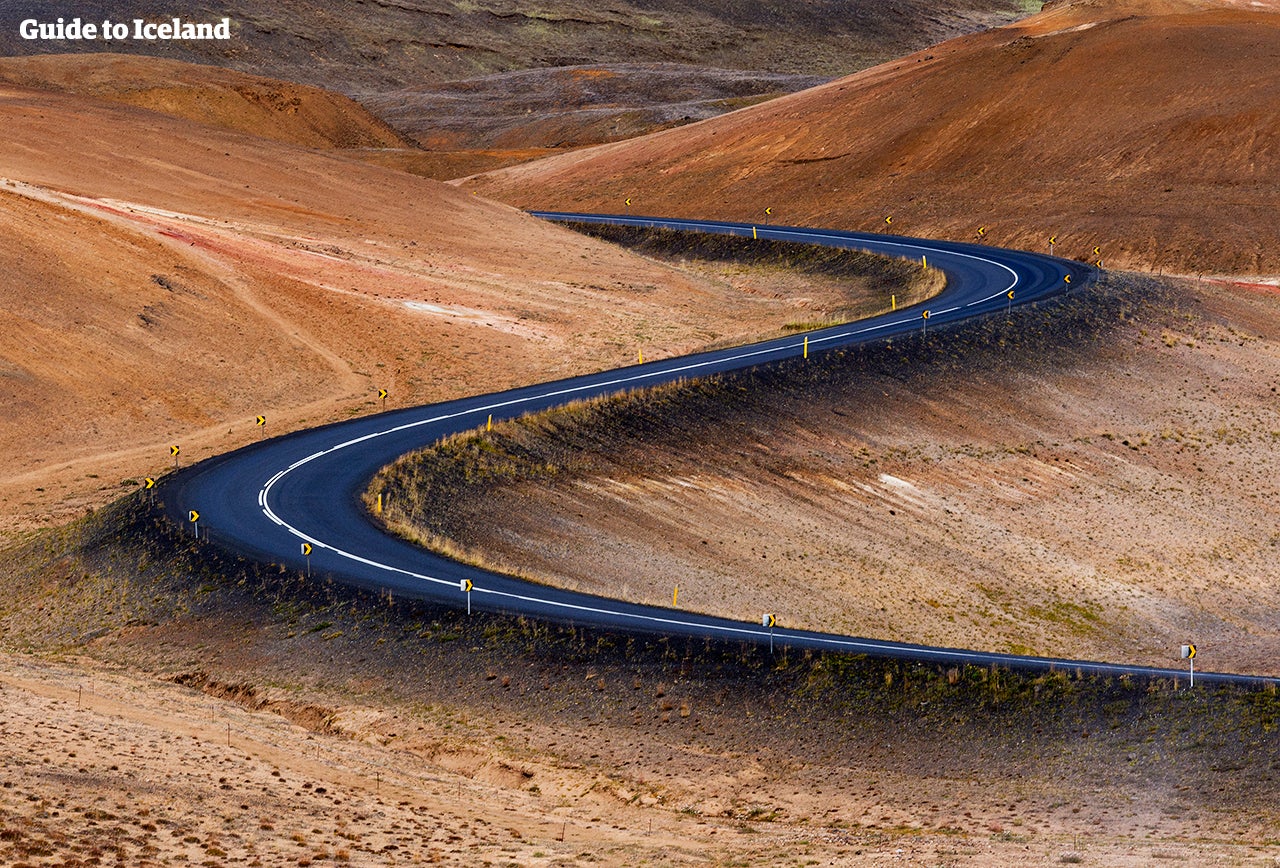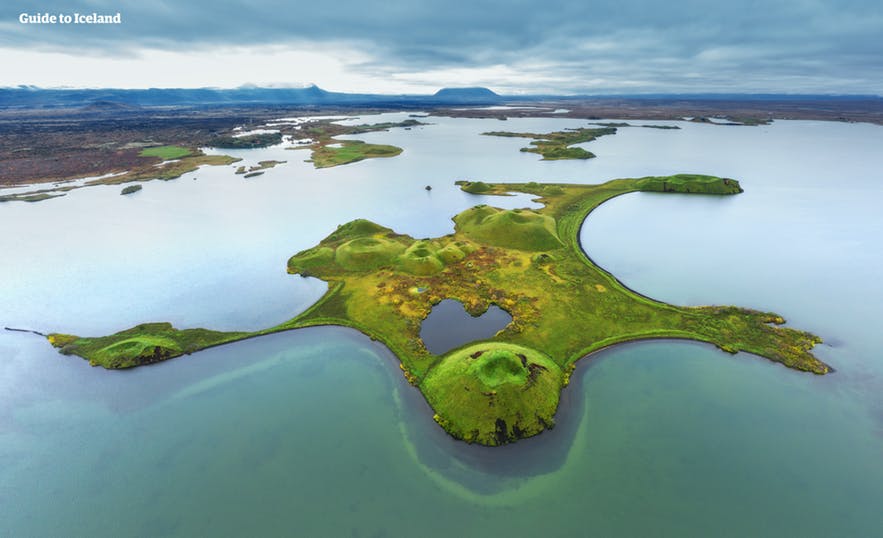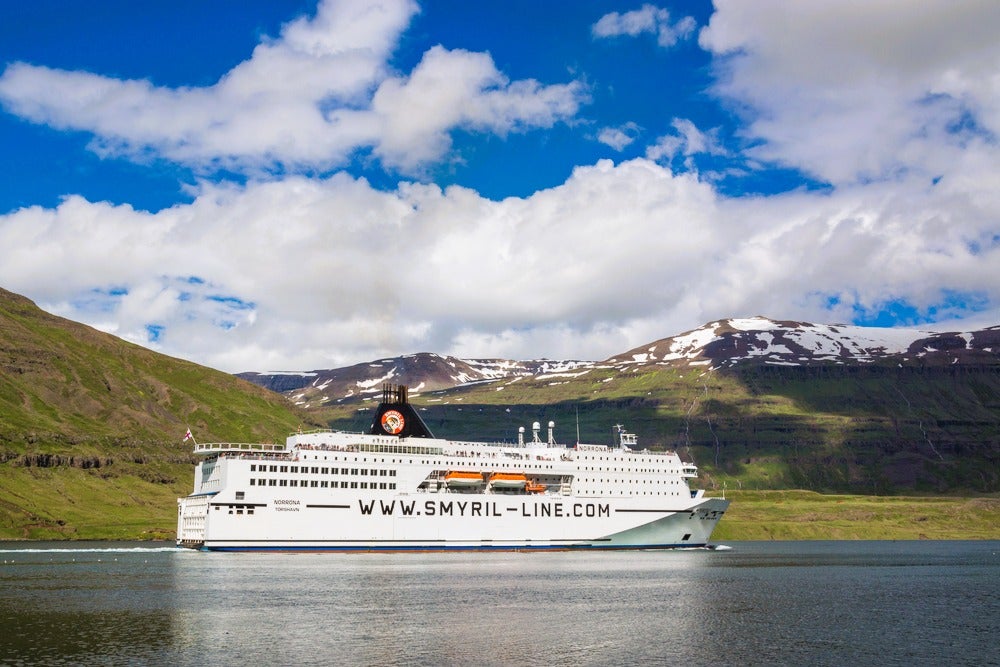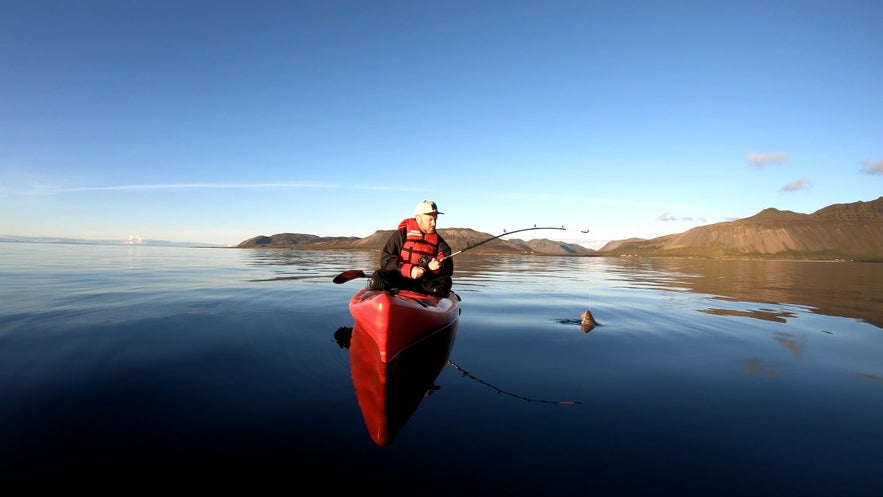
Fishing in Iceland is one of the most relaxing outdoor activities you can do, but planning a trip isn’t always as chill. Do you need a license? Which waterways are public? Can you fish independently in Iceland? Read on for answers to all your Icelandic fishing questions.
Icelanders are as connected to fishing as they are to the island itself, and they’re happy to share their rich Icelandic fishing heritage with everyone. Whether you prefer joining expert-led fishing tours in Iceland or renting a car and going solo, there’s something for every angler on this rugged island.
Why You Can Trust Our Content
Guide to Iceland is the most trusted travel platform in Iceland, helping millions of visitors each year. All our content is written and reviewed by local experts who are deeply familiar with Iceland. You can count on us for accurate, up-to-date, and trustworthy travel advice.
With incredible fjords, fertile oceans, and a network of lakes and rivers webbing across the country, it is little wonder that fishing in Iceland is so popular.
Continue reading to learn all about Iceland’s most historic activity, how to get an Iceland fishing license, and where to find the best fishing in Iceland.
Key Takeaways
-
License requirements: A fishing license is required for fishing in Iceland's freshwater areas. Certain fish may require additional species-specific permits.
-
Best fishing locations: Lake Thingvallavatn, Lake Laugarvatn, and Lake Myvatn are popular for freshwater fishing; coastal areas are accessible through guided tours for sea angling.
-
Popular freshwater species: Arctic char, brown trout, and Atlantic salmon are the main freshwater species for recreational fishing.
-
Popular saltwater species: Atlantic cod, haddock, pollock, and Atlantic catfish are abundant in Iceland's waters.
-
Fishing seasons: The main fishing season runs from April to September, with sea trout available from April to September 30th and salmon primarily in the summer months.
-
Conservation awareness: Some areas (like Thingvallavatn) are catch-and-release only to preserve unique fish populations, while the Atlantic halibut is endangered and should be released if caught.
-
Cultural significance: Fishing has been vital to Iceland's history, economy, and cultural identity for over a thousand years.
Fishing in Iceland
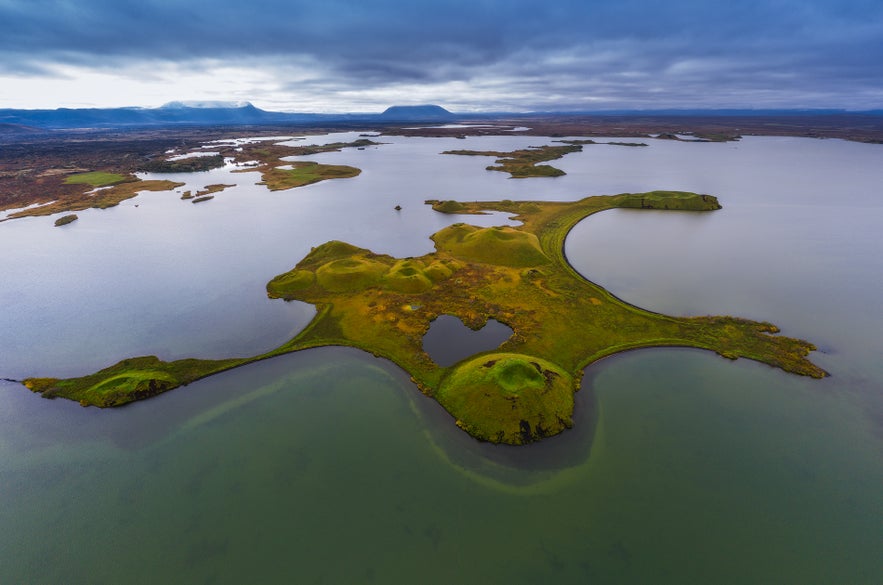 Surrounded by peaceful landscapes, the fishing spots around Iceland are some of the most serene in the world. They provide the sought-after harmony most anglers need to handle the bustle of their day-to-day lives.
Surrounded by peaceful landscapes, the fishing spots around Iceland are some of the most serene in the world. They provide the sought-after harmony most anglers need to handle the bustle of their day-to-day lives.
The enterprise of fishing in Iceland, however, goes much deeper than modern recreational joy. No practice has been more vital to the survival of the nation’s people in its thousand-year history. Without the bounty of the ocean, it would be unlikely that the land would ever have been properly inhabited.
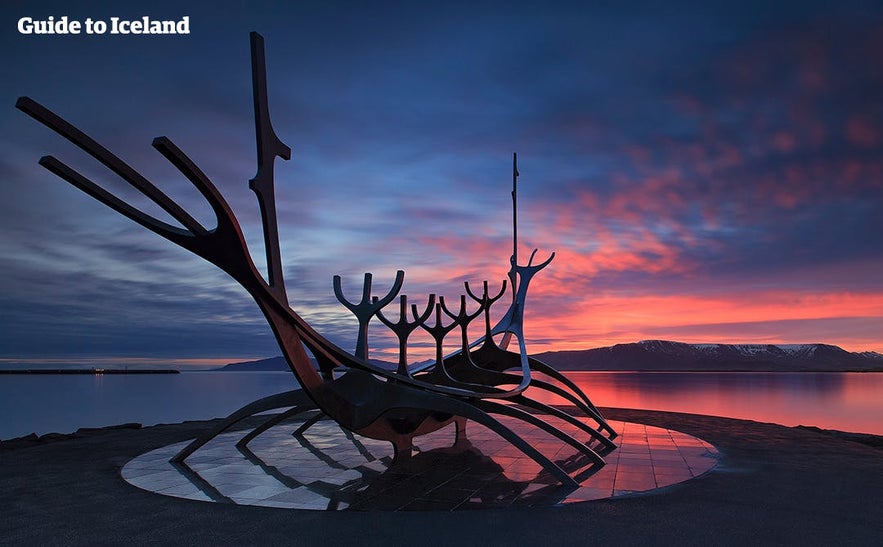
Fishing in Iceland is a historical, commercial, and cultural enterprise as much as it is a recreational one.
Recreational Fishing in Iceland
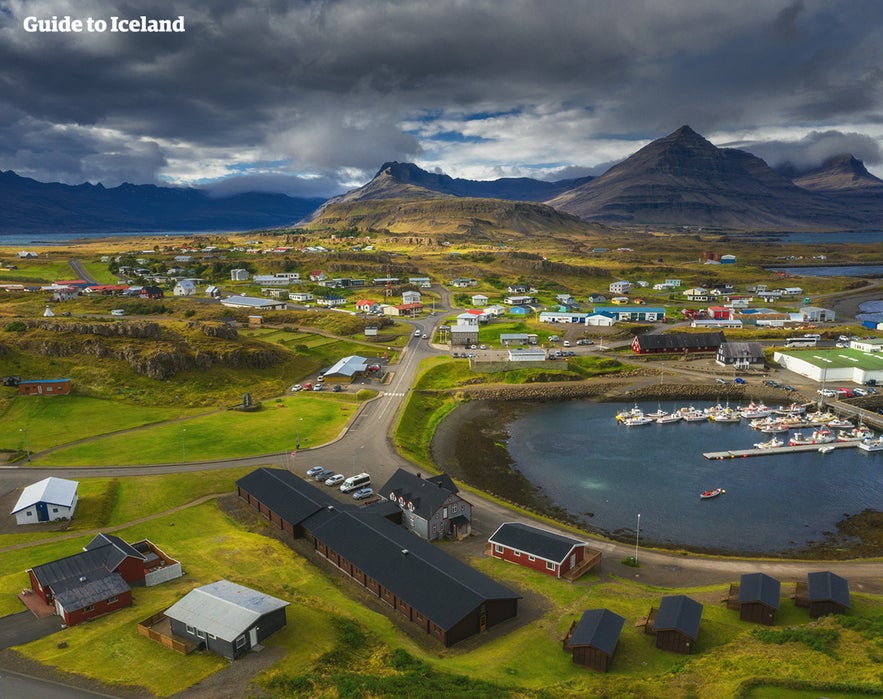
Beyond its historical significance and economic impact, recreational fishing in Iceland is a fantastic way to connect with the country's natural beauty and enjoy some peace and quiet.
With a choice between lakes, rivers, and coastal waters, Iceland offers anglers plenty of opportunities to cast a line and maybe even snag a trophy fish.
Best Fishing Lakes in Iceland

However, it is far from the only fishing option at one of the many lakes in Iceland.
Lake Laugarvatn
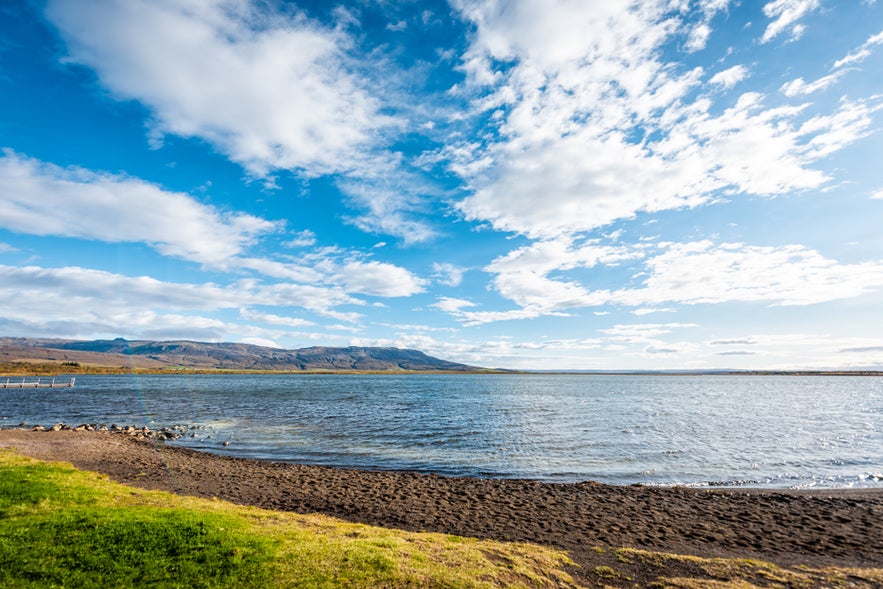 Located in South Iceland, Lake Laugarvatn is best known for the geothermal heat that rises from its lake bed—making it a unique and scenic fishing spot. The lake lies along the popular Golden Circle route, making it easily accessible by car, only 50 miles (75 kilometers), an hour's drive, from Reykjavik. Anglers can expect to find both brown trout and Arctic char in its waters. Nearby travelers can find cozy accommodations in Laugarvatn and local hot springs for relaxing after a day on the lake.
Located in South Iceland, Lake Laugarvatn is best known for the geothermal heat that rises from its lake bed—making it a unique and scenic fishing spot. The lake lies along the popular Golden Circle route, making it easily accessible by car, only 50 miles (75 kilometers), an hour's drive, from Reykjavik. Anglers can expect to find both brown trout and Arctic char in its waters. Nearby travelers can find cozy accommodations in Laugarvatn and local hot springs for relaxing after a day on the lake.
Lake Ellidavatn
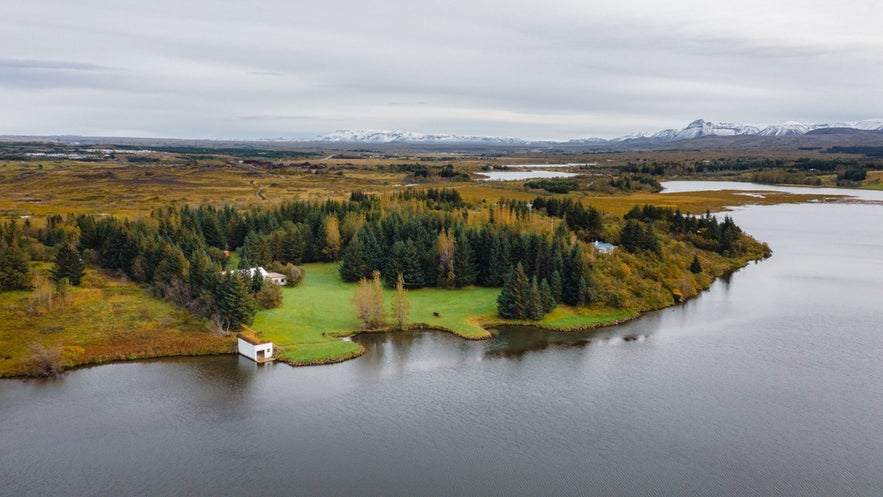 Lake Ellidavatn is nestled within the Greater Reykjavik area, making it one of the most accessible fishing locations in Iceland. Just a short drive or bus ride from downtown Reykjavik, this urban lake provides a peaceful retreat with the chance to catch salmon, especially during the right season. The lake is part of the Heidmork Nature Reserve, offering trails and scenic views in addition to fishing opportunities.
Lake Ellidavatn is nestled within the Greater Reykjavik area, making it one of the most accessible fishing locations in Iceland. Just a short drive or bus ride from downtown Reykjavik, this urban lake provides a peaceful retreat with the chance to catch salmon, especially during the right season. The lake is part of the Heidmork Nature Reserve, offering trails and scenic views in addition to fishing opportunities.
Lake Myvatn
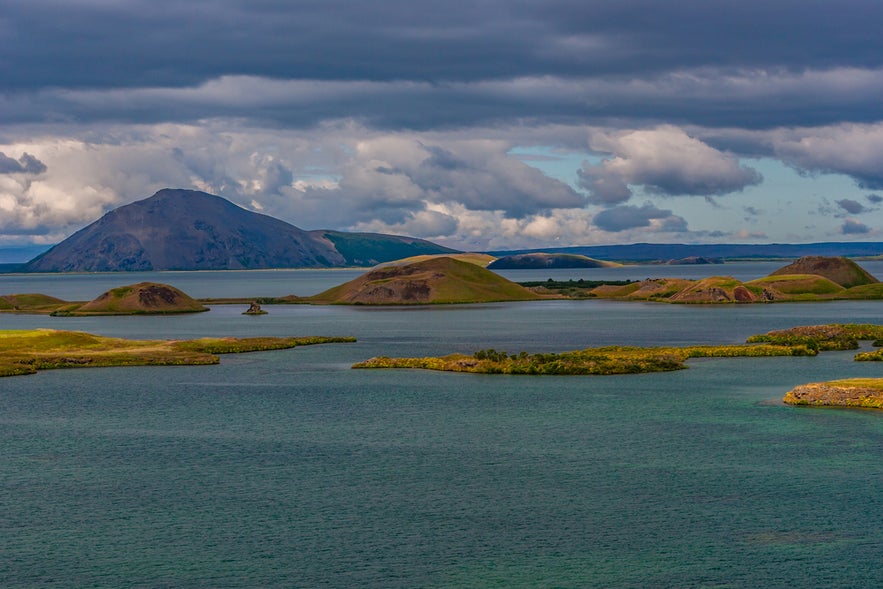 In North Iceland, Lake Myvatn is a fly fisher’s dream, surrounded by dramatic volcanic landscapes, geothermal hot spots, and a wealth of birdlife. It’s about 45 miles (74 kilometers), a one-hour drive, from Akureyri, the largest town in the north, where travelers can base themselves for fishing trips. The lake is known for its excellent freshwater fishing, particularly for Arctic char and brown trout. Be sure to explore the nearby lava fields and natural baths while in the area.
In North Iceland, Lake Myvatn is a fly fisher’s dream, surrounded by dramatic volcanic landscapes, geothermal hot spots, and a wealth of birdlife. It’s about 45 miles (74 kilometers), a one-hour drive, from Akureyri, the largest town in the north, where travelers can base themselves for fishing trips. The lake is known for its excellent freshwater fishing, particularly for Arctic char and brown trout. Be sure to explore the nearby lava fields and natural baths while in the area.
Lake Lagafljot
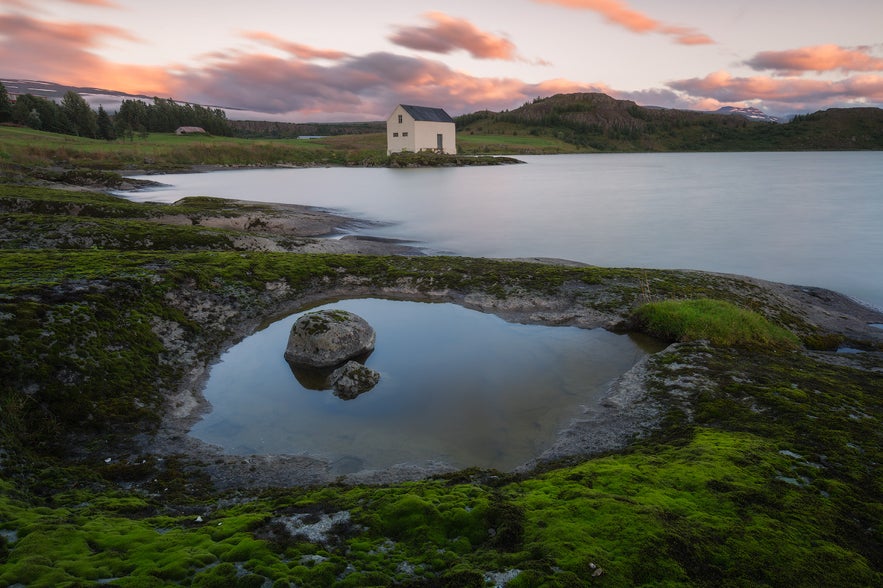 Near Egilsstadir in East Iceland is the popular Lake Lagafljot. The glacial waters of this long, narrow lake are home to brown trout and Arctic char, but due to poor visibility, net fishing is more effective than fly or lure fishing. Keep an eye out on the lake here while waiting for your catch. It is said to contain a mythical wyrm creature, records of which date back centuries. Egilsstadir offers plenty of accommodations and serves as a convenient base for exploring the region.
Near Egilsstadir in East Iceland is the popular Lake Lagafljot. The glacial waters of this long, narrow lake are home to brown trout and Arctic char, but due to poor visibility, net fishing is more effective than fly or lure fishing. Keep an eye out on the lake here while waiting for your catch. It is said to contain a mythical wyrm creature, records of which date back centuries. Egilsstadir offers plenty of accommodations and serves as a convenient base for exploring the region.
Best Fishing Rivers in Iceland
Rivers snake all across Iceland, most originating at the glaciers and traversing spectacular waterfalls on their way to the ocean. Not all rivers in Iceland are fishable; even where you can fish, there are many regulations. But for most visiting anglers, river fishing in Iceland is high on the to-do list.
To catch some fish, like the Atlantic salmon, you have to fish in the rivers. And if you want to try your hand at fly fishing in Iceland, the rivers are a must.
Fossa River
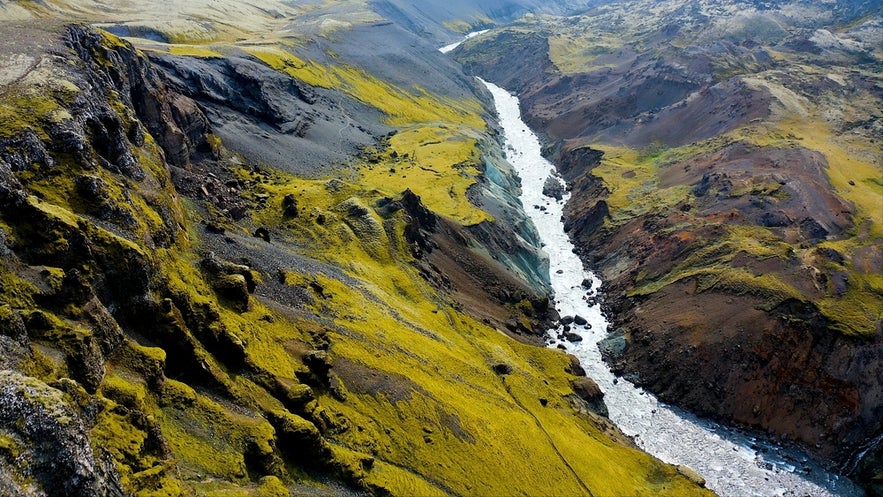 Located in South Iceland, the Fossa River is a peaceful two-rod river known for its crystal-clear waters and scenic, tranquil surroundings. It is a strictly catch-and-release river, making it ideal for conservation-minded anglers. Easily accessible by road, it’s a great day trip for those staying in the nearby town of Selfoss. Trout and char are the primary species found here.
Located in South Iceland, the Fossa River is a peaceful two-rod river known for its crystal-clear waters and scenic, tranquil surroundings. It is a strictly catch-and-release river, making it ideal for conservation-minded anglers. Easily accessible by road, it’s a great day trip for those staying in the nearby town of Selfoss. Trout and char are the primary species found here.
Laugardalsa River
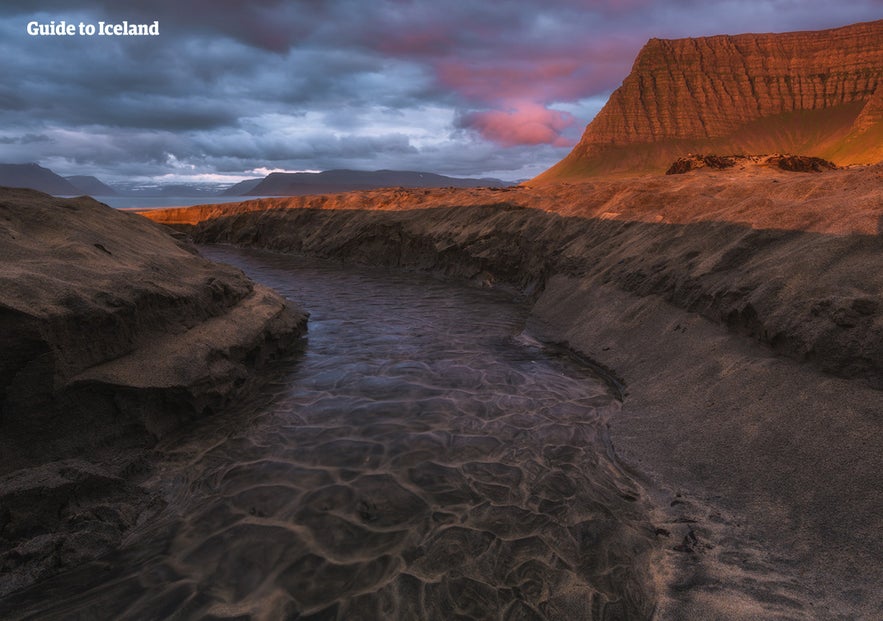 The Laugardalsa River flows through West Iceland and is a three-rod river offering an intimate and quiet fishing experience. This salmon-rich river is particularly attractive to those looking for productive yet less-crowded waters. It is accessible via Route 1 (Iceland’s Ring Road) from Reykjavik, roughly a two-hour drive, and the closest town for accommodations is Borgarnes.
The Laugardalsa River flows through West Iceland and is a three-rod river offering an intimate and quiet fishing experience. This salmon-rich river is particularly attractive to those looking for productive yet less-crowded waters. It is accessible via Route 1 (Iceland’s Ring Road) from Reykjavik, roughly a two-hour drive, and the closest town for accommodations is Borgarnes.
Midfjardara River
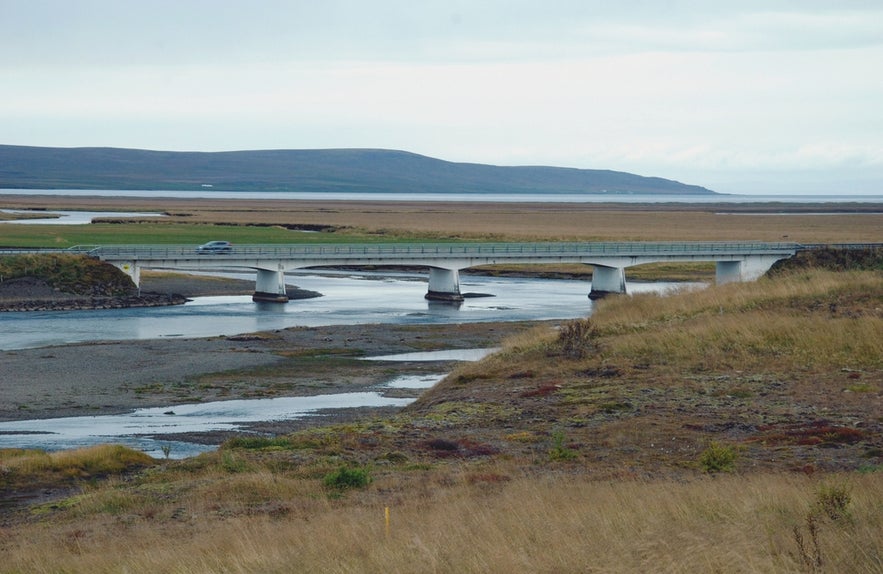 The Midfjardara River (Miðfjarðará) in North Iceland is celebrated as one of the best salmon rivers in the country, and it operates on a strict catch-and-release policy. The river runs near the town of Blonduos. Its diverse terrain, including canyons, rapids, and pools, makes it a dream destination for seasoned fly fishers.
The Midfjardara River (Miðfjarðará) in North Iceland is celebrated as one of the best salmon rivers in the country, and it operates on a strict catch-and-release policy. The river runs near the town of Blonduos. Its diverse terrain, including canyons, rapids, and pools, makes it a dream destination for seasoned fly fishers.
West Ranga River
 The West Ranga River, located in South Iceland, is one of the most popular and productive salmon rivers in the country. The 14-rod river has a long fishing season, making it a great choice for both beginner and experienced anglers. Just over 55 miles (89 kilometers) from Reykjavik, it is close to the town of Hella, where many fishing lodges and guesthouses are located.
The West Ranga River, located in South Iceland, is one of the most popular and productive salmon rivers in the country. The 14-rod river has a long fishing season, making it a great choice for both beginner and experienced anglers. Just over 55 miles (89 kilometers) from Reykjavik, it is close to the town of Hella, where many fishing lodges and guesthouses are located.
Thjorsa River
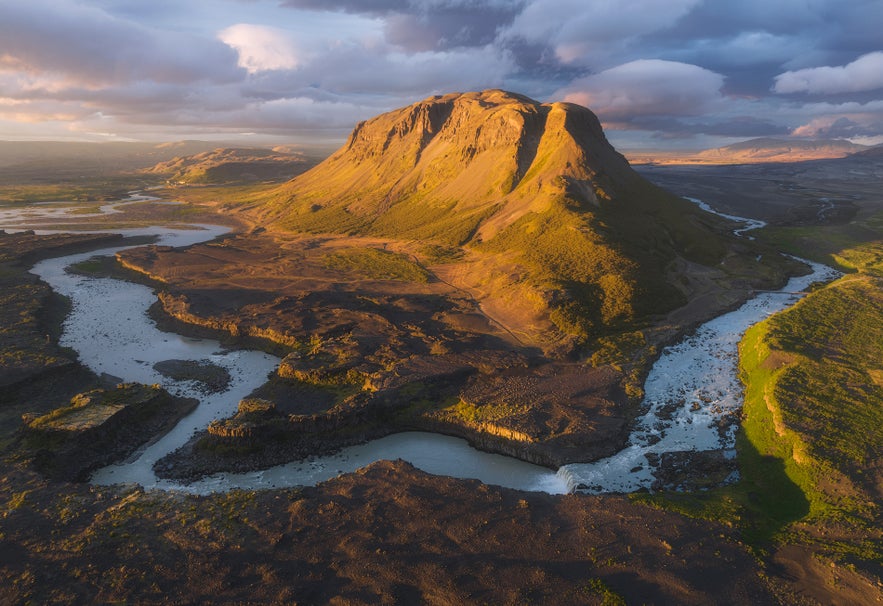 The Thjorsa River, Iceland’s longest river, flows through the southern region and is ideal for net fishing, particularly for salmon. Its powerful glacial waters and rich fishing history make it both a cultural and angling landmark. Accessible from towns like Selfoss and Hella, not far from Reykjavik. Due to its glacial origin, fishing techniques may differ from those used in clearer rivers.
The Thjorsa River, Iceland’s longest river, flows through the southern region and is ideal for net fishing, particularly for salmon. Its powerful glacial waters and rich fishing history make it both a cultural and angling landmark. Accessible from towns like Selfoss and Hella, not far from Reykjavik. Due to its glacial origin, fishing techniques may differ from those used in clearer rivers.
Varma River
 Located in the town of Hveragerdi, just 45 minutes from Reykjavik, the Varma River is a spring-fed stream known for its clear waters and accessibility. While not a major salmon river, it’s an excellent spot for fly fishing, particularly for brown trout and Arctic char. Its proximity to hot springs and the town’s amenities makes it a relaxing and convenient choice for a fishing getaway.
Located in the town of Hveragerdi, just 45 minutes from Reykjavik, the Varma River is a spring-fed stream known for its clear waters and accessibility. While not a major salmon river, it’s an excellent spot for fly fishing, particularly for brown trout and Arctic char. Its proximity to hot springs and the town’s amenities makes it a relaxing and convenient choice for a fishing getaway.
Bruara River
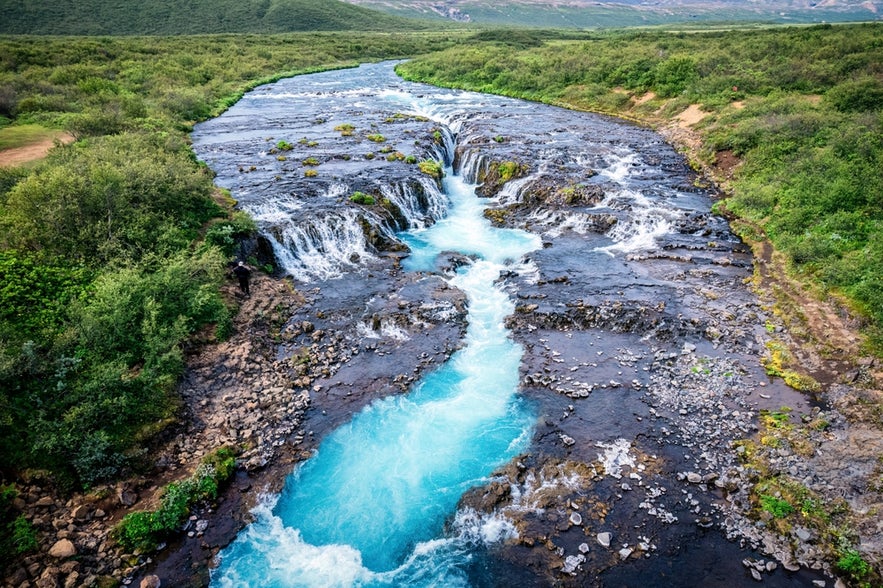 The Bruara River is a spring-fed river in South Iceland, easily accessible from the Golden Circle route, not far from Reykjavik. Known for its calm, clear waters, it's a haven for fly fishers looking to target brown trout in a serene setting. Nearby, visitors can find accommodations in Laugarvatn or the town of Fludir are ideal bases for visitors exploring the area.
The Bruara River is a spring-fed river in South Iceland, easily accessible from the Golden Circle route, not far from Reykjavik. Known for its calm, clear waters, it's a haven for fly fishers looking to target brown trout in a serene setting. Nearby, visitors can find accommodations in Laugarvatn or the town of Fludir are ideal bases for visitors exploring the area.
Holaa River
The Holaa River is an easily accessible river from Reykjavik, popular among fly fishers targeting brown trout and Arctic char. Its varied water types—from slow pools to riffles—offer variety and challenge for anglers of all skill levels.
Ice Fishing in Iceland

The largest concentration of frozen lakes is in the Highlands, which are almost entirely inaccessible in the winter months. There are, however, some guided super-jeep trips to lake fishing spots available to visiting anglers. This popular day trip starts in Akureyri, the capital of North Iceland.
Sea Angling in Iceland
 Sea angling is challenging to do independently, except for those content with shore fishing in Iceland. The easiest, most stress-free place to do this is at Reykjavik’s Old Harbour. Here, you can rent a rod for approximately 30 USD an hour and start angling from the end of the pier. This is a great way to break up a day of city sightseeing.
Sea angling is challenging to do independently, except for those content with shore fishing in Iceland. The easiest, most stress-free place to do this is at Reykjavik’s Old Harbour. Here, you can rent a rod for approximately 30 USD an hour and start angling from the end of the pier. This is a great way to break up a day of city sightseeing.
Boat tours, which will take you to much more bountiful fishing spots, run all around the country and are discussed in more detail below.
Guided Iceland Fishing Trips
 Guided fishing trips will often allow you to head to the lesser-known rivers but tend to be pricey. On the other hand, day tours or shorter multi-day tours are usually cheaper, more leisurely, and more readily available if you’re interested in something like salmon fishing in Iceland on a budget.
Guided fishing trips will often allow you to head to the lesser-known rivers but tend to be pricey. On the other hand, day tours or shorter multi-day tours are usually cheaper, more leisurely, and more readily available if you’re interested in something like salmon fishing in Iceland on a budget.
This day tour, for example, allows you to fish in Lake Thingvallavatn and the Bruara River. It is tailored for experienced and novice anglers alike; you are likely to catch brown trout and Arctic char.
Popular Fishing Day Trips in Iceland
Dishing day trips are an easy way to go fishing in Iceland. These top-rated tours are excellent options.
-
2-Hour Whale Watching & Sea Fishing Boat Trip With Transfer From Hauganes – This popular tour is a quick way to experience Iceland’s seas without getting too seasick.
-
3-Hour Sea Fishing Tour – This family-friendly tour departs from Reykjavik and includes an option to catch and cook your fish right on the boat.
-
Relaxing 9-Hour River Fishing Tour for Sea Trout, Char, & Salmon With Transfer From Reykjavik – More dedicated anglers can spend the day fishing in South Iceland.
There are plenty more popular fishing tours, or you can book an entire 9-day Ring Road vacation, scheduled with all the fishing your heart desires.
Iceland Sea-Fishing Trips
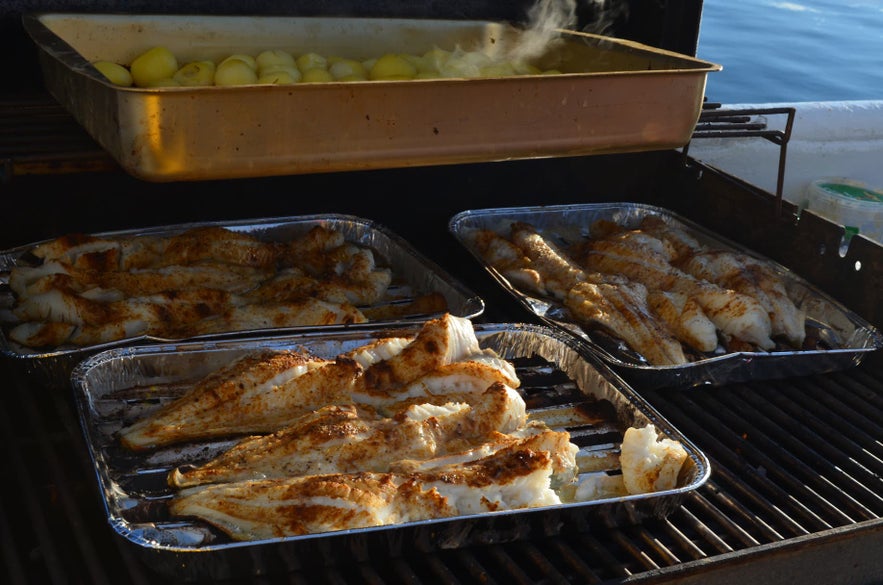
These tours allow you to head out to sea on a memorable fishing adventure.
-
Classic 3-Hour Sea Fishing Trip From Reykjavik – Embark on a captivating adventure that culminates in a meal prepared from the fish you catch.
-
Unforgettable 6-Hour Combination Whale Watching & Sea Fishing Tour – Board the largest whale watching boat in Iceland for an unforgettable afternoon at sea.
-
3-Hour Sea Angling Tour With Catch-to-Feast Barbecue From Reykjavik – Whether a beginner eager to try angling or a seasoned angler, this tour is designed for everyone.
Iceland Lake-Fishing Trips
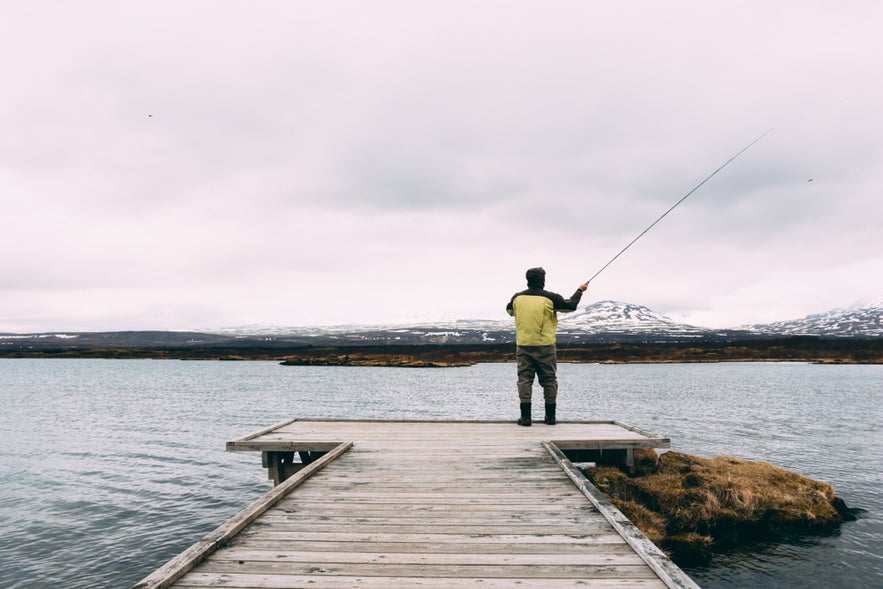 Enjoy a peaceful fishing experience in one of Iceland's many lakes.
Enjoy a peaceful fishing experience in one of Iceland's many lakes.
-
Fishing Pass to Lake Langisjor – Ensure a smooth experience during your fishing trip by securing your license in Lake Langisjor.
-
Affordable Golden Circle & Fishing Tour with Transfer from Reykjavik – See the major highlights of the Golden Circle sightseeing route with stops to fish in Iceland's lakes and rivers.
Iceland River-Fishing Trips
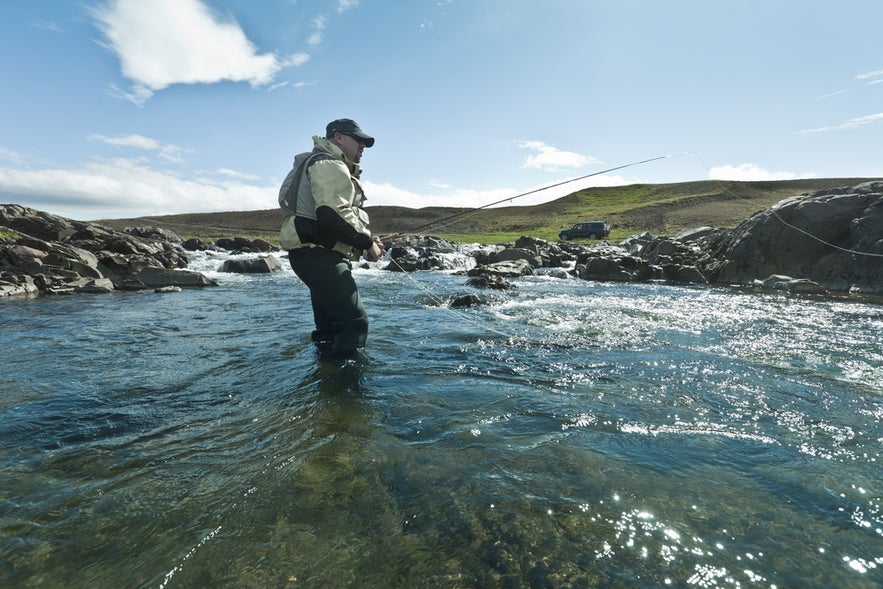 These exciting excursions bring you to some of the best fishing rivers in Iceland with expert guides.
These exciting excursions bring you to some of the best fishing rivers in Iceland with expert guides.
-
Relaxing 6-Hour Fishing Tour in North Iceland from Akureyri – Let your guide find the right river and equipment for the day’s conditions so you can relax in the river.
-
Full-Day Fishing Tour from Akureyri, Husavik, or Myvatn – This full-day fishing trip is for experienced anglers who want to take in everything North Iceland’s fishing spots have to offer.
-
Scenic 8-Hour Lake & River Fishing Tour with Transfer from Reykjavik – Have a guide pick you up, handle your gear, and help you find a trophy catch. It's a good option for those interested in fly-fishing in Iceland.
Fishing Regulations in Iceland
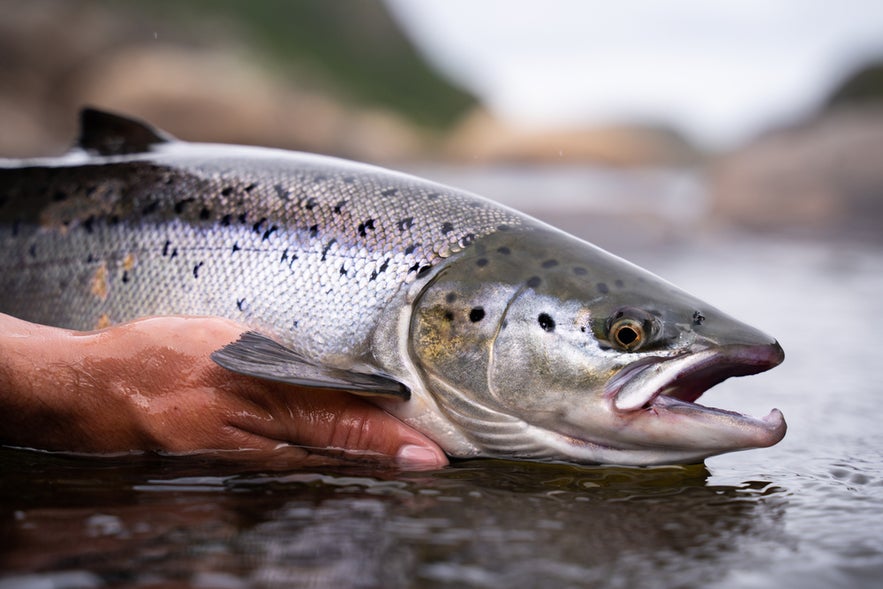 To protect natural fish populations, fishing is heavily regulated in Iceland. Each river system has its own rules, and it is always best to double-check them before setting out.
To protect natural fish populations, fishing is heavily regulated in Iceland. Each river system has its own rules, and it is always best to double-check them before setting out.
Here are the most important Iceland fishing regulations to be aware of:
-
Rod fishing is legal from 7:00 AM until sundown. Fishing at night is illegal, and you are not permitted to fish for more than 12 hours.
-
Net fishing for salmon is only legal on Tuesdays, Wednesdays, Thursdays, and Fridays.
-
Salmon can only be fished from June to September and only in fresh water.
-
You cannot net fish for salmon in the same river that someone else is fly fishing for them, and vice versa.
-
You cannot remove salmon from one river and leave it in another.
-
You must clean and sterilize any fishing equipment before using it in Icelandic waters if it has been used in a different country.
-
Fishing in any body of water is only allowed with express permission from whoever owns the land. In many places, there are total bans.
Though still allowed, trends in Iceland are moving quickly away from net fishing. It is expected to be entirely banned in almost all rivers and lakes within a few years. Catch-and-release is also heavily encouraged and is mandatory in many places.
Fishing Independently in Iceland
There are plenty of ways to enjoy the pleasure of fishing in Iceland, whether you do so independently or with an experienced guide.
Some outfitters will rent rods and reels, although you must always supply your own flies and lures. You are welcome to bring your equipment from home, but it must be sterilized before being used in any Icelandic river or lake.
To fish in Icelandic waters, you’ll need an Iceland fishing license, which differs in cost and availability depending on where you look. You can, however, get a single license for just 6,900 ISK, which will allow you access to over 30 lakes in the country. As a bonus, any child under 14 is allowed to fish with another license holder for free.
You can purchase the Iceland Fishing Card online or at an N1 or OLIS gas station, which are found all over the island.
Types of Fish in Iceland
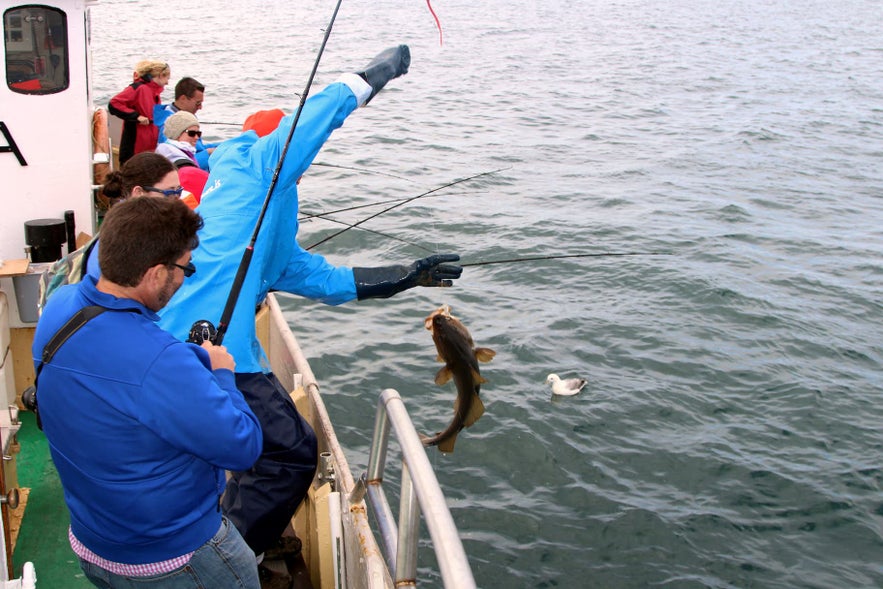
Iceland is surrounded by oceans and filled with glacier-fed rivers and lakes, so it’s no wonder the country has some of the best seafood restaurants. Thanks in part to Iceland’s close monitoring of its fisheries, the island abounds with fresh and saltwater fish alike.
The oceans around Iceland serve as breeding grounds for many species, often offering the only habitat where some endangered species can still be found and fished in large numbers.
Saltwater Fish in Iceland
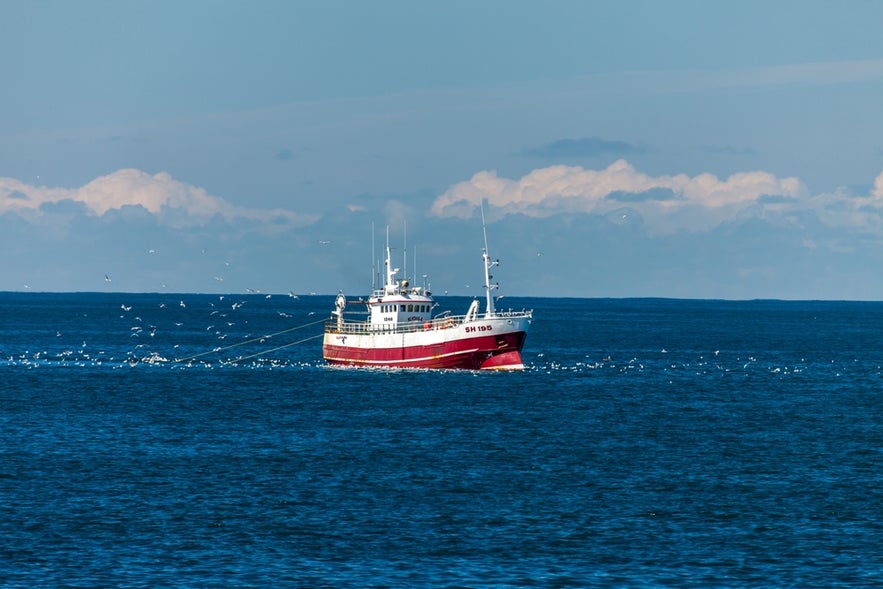 The ocean’s fisheries largely kept Icelanders alive for a millennium, not the smaller fish found inland. The wealth of nutrition carried to the coasts by the Gulf Stream continues to supply Icelanders as much as it does the nation’s many whales, dolphins, seals, and seabirds.
The ocean’s fisheries largely kept Icelanders alive for a millennium, not the smaller fish found inland. The wealth of nutrition carried to the coasts by the Gulf Stream continues to supply Icelanders as much as it does the nation’s many whales, dolphins, seals, and seabirds.
Below are the species you are most likely to catch when saltwater fishing in Iceland:
Atlantic Catfish in Iceland
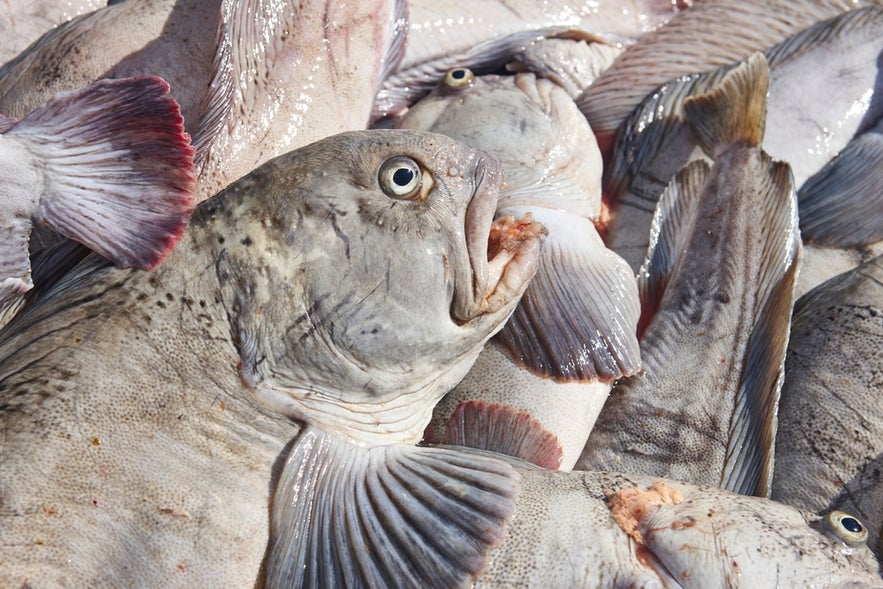 One of the most commonly caught fish in Iceland is the Atlantic catfish (Steinbítur in Icelandic). The saltwater catfish can be quite large, often over a meter long, and survive in the near-Arctic waters thanks to the antifreeze that pumps through their blood. The heaviest recorded was 40 lbs (18 kg).
One of the most commonly caught fish in Iceland is the Atlantic catfish (Steinbítur in Icelandic). The saltwater catfish can be quite large, often over a meter long, and survive in the near-Arctic waters thanks to the antifreeze that pumps through their blood. The heaviest recorded was 40 lbs (18 kg).
The Atlantic catfish is popular as the Icelandic delicacy of dried fish. If you want to try it, the locals recommend pairing it with large scoops of butter.
Atlantic Cod in Iceland
 Despite being vulnerable throughout much of the Atlantic, cod (Þorskur in Icelandic) is still abundant in Iceland. Catching creates fewer ethical concerns than throughout much of the world.
Despite being vulnerable throughout much of the Atlantic, cod (Þorskur in Icelandic) is still abundant in Iceland. Catching creates fewer ethical concerns than throughout much of the world.
For those seeking a large catch, fishing for cod can be very rewarding. Often a meter or more, the largest recorded weighed a whopping 211 lbs (96 kg).
Haddock in Iceland
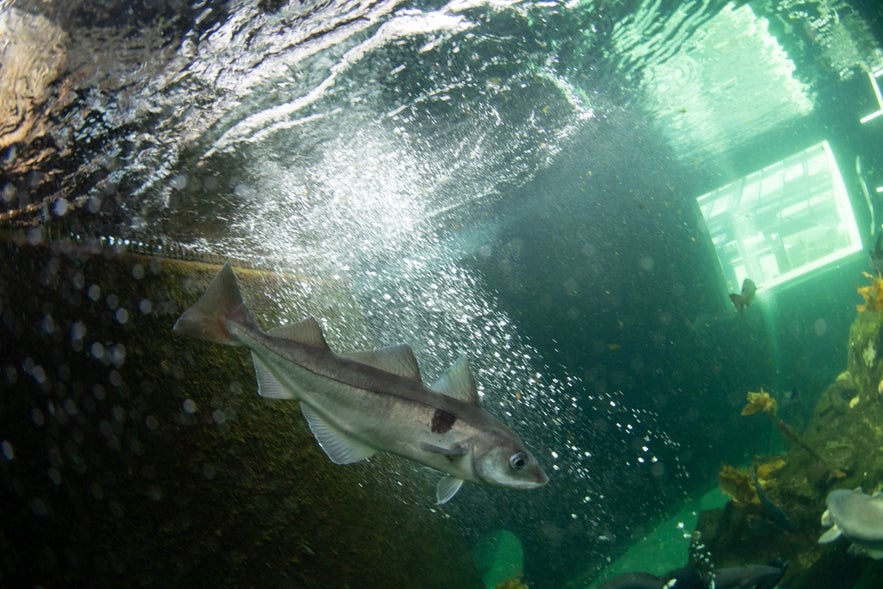 Haddock (Ýsa in Icelandic) is another species that is vulnerable globally but has thriving breeding grounds in Iceland. It has been a staple of the Icelandic diet since the time of the settlement and features in some classic dishes. The most notable is smoked haddock from the Arctic island of Grimsey.
Haddock (Ýsa in Icelandic) is another species that is vulnerable globally but has thriving breeding grounds in Iceland. It has been a staple of the Icelandic diet since the time of the settlement and features in some classic dishes. The most notable is smoked haddock from the Arctic island of Grimsey.
Although delicious and easy to catch, haddock are small compared to other species you might hook on a sea angling tour; they rarely exceed 23 inches (60 centimeters).
Mackerel in Iceland
 Mackerel (Makríll in Icelandic) is even smaller than haddock. The fish is increasing in popularity in Iceland due to its rich meat and high nutritional value. It also has low levels of mercury, meaning it can be eaten regularly without worry.
Mackerel (Makríll in Icelandic) is even smaller than haddock. The fish is increasing in popularity in Iceland due to its rich meat and high nutritional value. It also has low levels of mercury, meaning it can be eaten regularly without worry.
Halibut in Iceland
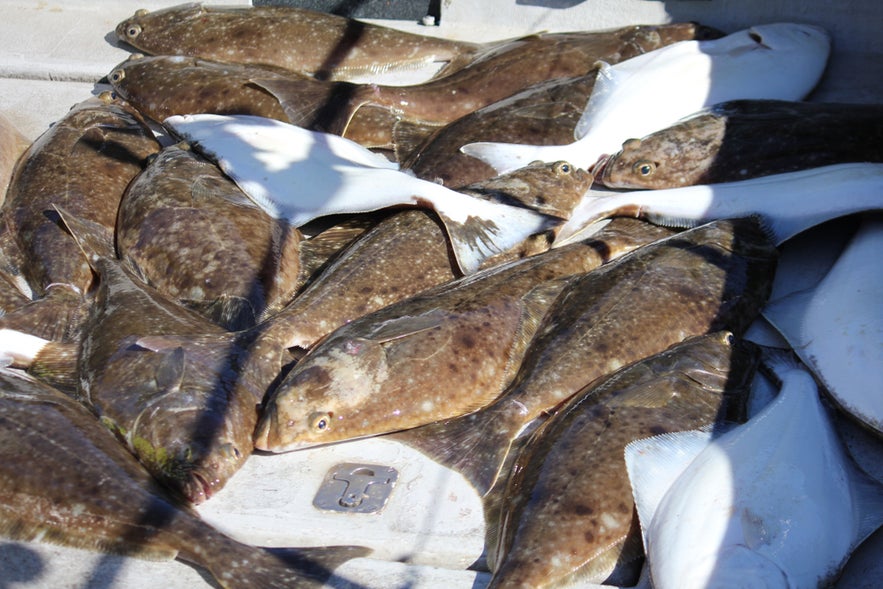 Halibut fishing in Iceland is a little tricky but not impossible. The Atlantic halibut (Lúða in Icelandic) is the only endangered fish you may catch when sea fishing in Iceland, so catch-and-release is highly encouraged if you should hook one. But the concern is only for wild halibut. You can still buy and eat ethically sourced halibut in Iceland, as they are raised on fish farms to protect their wild populations.
Halibut fishing in Iceland is a little tricky but not impossible. The Atlantic halibut (Lúða in Icelandic) is the only endangered fish you may catch when sea fishing in Iceland, so catch-and-release is highly encouraged if you should hook one. But the concern is only for wild halibut. You can still buy and eat ethically sourced halibut in Iceland, as they are raised on fish farms to protect their wild populations.
Pollock in Iceland
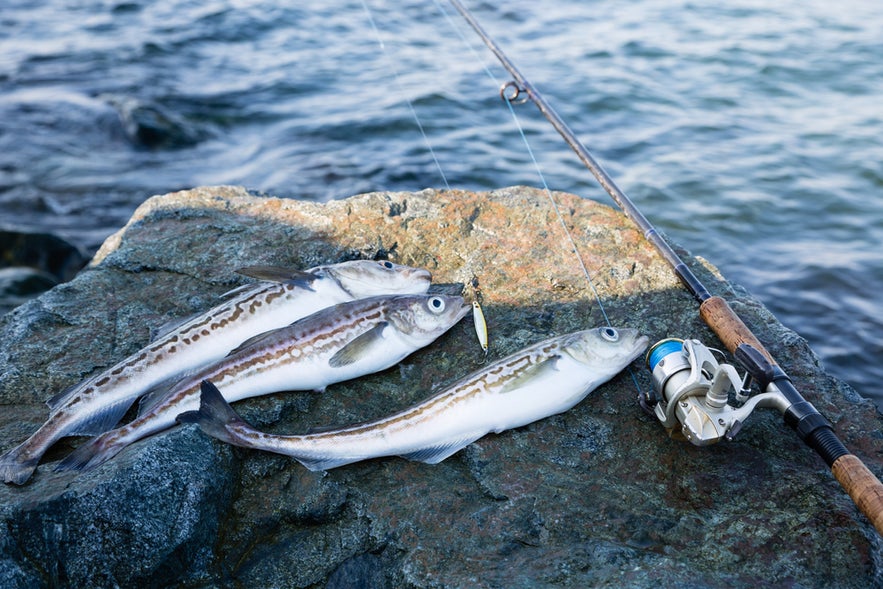 Pollock (Ufsi in Icelandic) is an abundant fish that can grow up to one meter long. The heaviest recorded weighed 46 lbs (21 kg). Though foodies often scorn pollock for its commonness (it is the main ingredient of frozen junk food like fish fingers), the Nordic countries have always held it in high regard for its distinctive mild flavor.
Pollock (Ufsi in Icelandic) is an abundant fish that can grow up to one meter long. The heaviest recorded weighed 46 lbs (21 kg). Though foodies often scorn pollock for its commonness (it is the main ingredient of frozen junk food like fish fingers), the Nordic countries have always held it in high regard for its distinctive mild flavor.
Freshwater Fish in Iceland
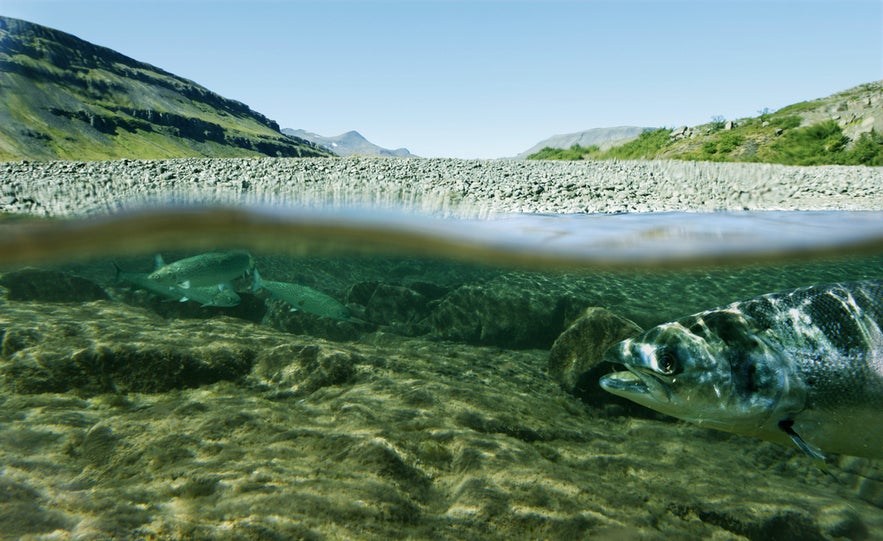 Only five species of fish live and breed in Iceland’s interior rivers and lakes. Two of them, the three-spined stickleback and the eel, are not routinely eaten.
Only five species of fish live and breed in Iceland’s interior rivers and lakes. Two of them, the three-spined stickleback and the eel, are not routinely eaten.
The other three Iceland freshwater fish, however, are found in abundance to the pleasure of fly fishermen and foodies alike and serve as the main ingredients for many classic Icelandic dishes.
Brown Trout in Iceland
 Any fisherman accustomed to cooler climates will be used to catching trout (Urriði in Icelandic). These fish are rather special within Iceland’s largest natural lake, Thingvallavatn. Isolated from any other body of water for 10,000 years, the trout population has evolved separately from its cousins globally and is much larger as a result.
Any fisherman accustomed to cooler climates will be used to catching trout (Urriði in Icelandic). These fish are rather special within Iceland’s largest natural lake, Thingvallavatn. Isolated from any other body of water for 10,000 years, the trout population has evolved separately from its cousins globally and is much larger as a result.
So if you want to set a personal brown trout record, you may snag the largest trout of your life, up to and exceeding 33 lbs (15 kg). Such a catch makes for a great photo, but Thingvallavatn is catch-and-release only to preserve the historic Icelandic fishery.
To catch a trout you can eat, you should instead look for sea brown trout, which travel upriver. The Varma River is best for this. While they continue to move inland throughout October, the sea trout fishing season runs only from April to September 30th.
Atlantic Salmon in Iceland
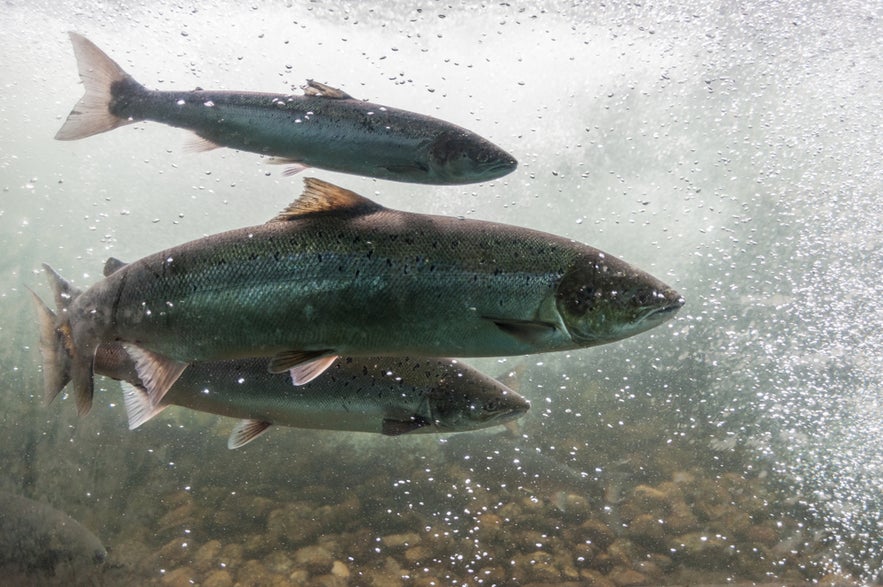 Although fishing for salmon (lax in Icelandic) is more regulated than fishing for Iceland’s other species, it is still possible in the summer. Some very large fish travel through Iceland’s waters. One of the biggest fish caught in Iceland was hooked by none other than singer Eric Clapton, weighing in at 28 lbs (12.7 kilograms).
Although fishing for salmon (lax in Icelandic) is more regulated than fishing for Iceland’s other species, it is still possible in the summer. Some very large fish travel through Iceland’s waters. One of the biggest fish caught in Iceland was hooked by none other than singer Eric Clapton, weighing in at 28 lbs (12.7 kilograms).
Arctic Char in Iceland
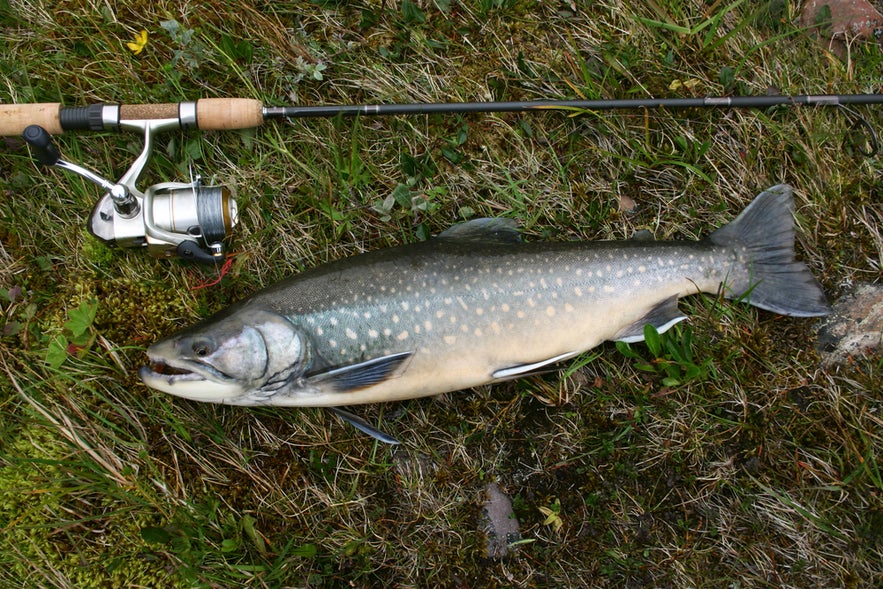 The most commonly caught freshwater fish in Iceland—and the one served in restaurants as a classic national dish—is the Arctic char (Bleikja in Icelandic). Its abundance makes up for its small size, usually between 0.5 to 10 lbs (0.2 to 5 kg), but some grow to double that size.
The most commonly caught freshwater fish in Iceland—and the one served in restaurants as a classic national dish—is the Arctic char (Bleikja in Icelandic). Its abundance makes up for its small size, usually between 0.5 to 10 lbs (0.2 to 5 kg), but some grow to double that size.
Arctic char prefer slower-moving water at an even lower temperature than trout but can be found in many common areas, such as Thingvallavatn. They are the most widespread fish in Iceland and are found in most freshwater bodies.
An Island Built on Fish
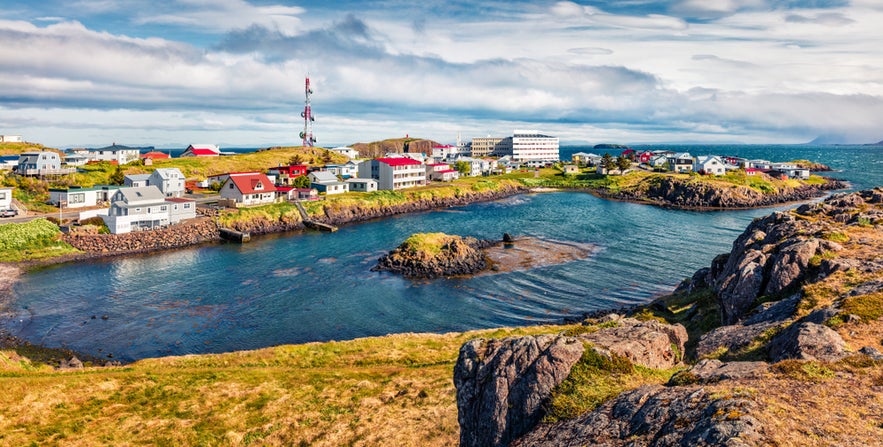 Iceland was built on fish and wool. Its first settlers survived brutal conditions for centuries on very little else—without any significant infrastructure or outside contact. It was a rugged, cruel life, but fish kept the population alive until industrialization in the 20th century allowed the nation to flourish.
Iceland was built on fish and wool. Its first settlers survived brutal conditions for centuries on very little else—without any significant infrastructure or outside contact. It was a rugged, cruel life, but fish kept the population alive until industrialization in the 20th century allowed the nation to flourish.
The catch provided nutrient-rich fresh food, it was easy to preserve by salting or drying, and the byproducts were exceedingly useful. Fish oil provided essential lamp fuel for the dark winter months, and fish leather was great for waterproofing clothing and for writing on.
The abundance of food and resources hidden just below the ocean’s surface was an important part of Norse heritage and spirituality. Their God of the Seas, Njord (spelled Njörðr in Icelandic), was renowned as one of the wealthiest and most generous deities.
Because fishing was so vital to the survival of the early settlers, and because of the barren, unforgiving interior of the country, the vast majority of villages and towns formed in Iceland were—and still are—coastal.
Before the population began a large-scale migration to Reykjavik in the 20th century, many coastal settlements and harbors of significance spread across every region. Many have since been deserted.
 Budir, for example, was once the main fishing centers of the Snaefellsnes Peninsula, but changes in industry and development have transformed it into a peaceful hamlet with a historic church and the romantic Hotel Budir.
Budir, for example, was once the main fishing centers of the Snaefellsnes Peninsula, but changes in industry and development have transformed it into a peaceful hamlet with a historic church and the romantic Hotel Budir.
Selatangar, on the Reykjanes Peninsula, used to draw hundreds of men for the fishing season, but now all that remain are haunting (and allegedly haunted) ruins.
-
See also The Ruins of Selatangar.
Despite the life it brought to the nation, fishing was historically a very dangerous affair. Boats were poorly constructed, the weather volatile, and the coastline rocky and ever-changing. Fishermen were thus highly respected pillars of society and had to meet a threshold of physical strength to be allowed on the water.
On the Snaefellsnes Peninsula, this was measured by the "Lifting Stones" on Djupalonssandur Beach, which can still be found. Visitors can test their toughness and see how they would have fared in time gone by. The stone size lifted corresponded to a title:
-
Lightweight, or Amlóði 50 pounds (23 kilograms)
-
Half as Good, or Hálfdrættingur 120 pounds (54 kilograms)
-
Half Strong, or Hálfsterkur 220 pounds (100 kilograms)
-
Full Strength, or Fullsterkur 340 pounds (154 kilograms)
The fishermen are still remembered today in Iceland’s many museums and exhibitions. Reykjavik is home to the Maritime Museum, which documents the seafaring history of Iceland and how important fishing has been to building the nation.
At the Osvor Maritime Museum in the Westfjords, you can find a curator who is always dressed in traditional fishing attire.
Turn east to Eskifjordur, in the Eastfjords, there is the Maritime Museum of East Iceland, which houses the historic Randulff’s Sea House, one of the top restaurants in East Iceland.
One of the most comprehensive, however, is the only museum in Iceland to win an international award: the Herring Era Museum in the northern town of Siglufjordur.
Commercial Fishing in Iceland
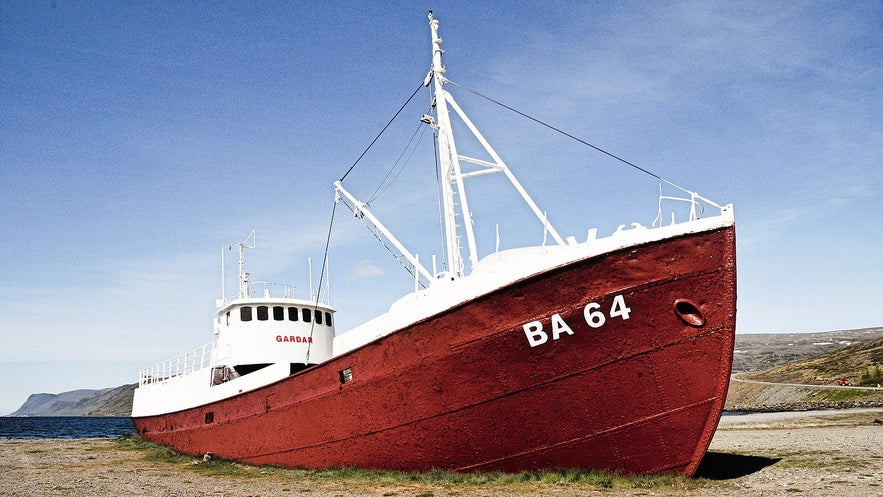 Photo from Wikimedia, Creative Commons, by Charlton. No edits made.
Photo from Wikimedia, Creative Commons, by Charlton. No edits made.
Commercial fishing is one of Iceland's biggest industries, exceeded only by the service sector due to the nation’s explosion of tourism. The centuries-old agricultural sector and new booming enterprises such as manufacturing and software production still trail behind it.
Though only 5% of the workforce is directly employed in fisheries, another 15% relies on them to remain relevant. Fish account for 40% of all Icelandic exports, and the economy is still very resource-reliant.
Top 6 FAQs for Fishing in Iceland
Here are some of the most frequently asked questions about fishing in Iceland.
1. Do I need a fishing license in Iceland?
Yes, a fishing license is required for all freshwater fishing in Iceland, including rivers and lakes. Licenses are typically sold by the day or week and must be obtained for each specific fishing location. You can purchase them online, from local outfitters, or directly from the landowners.
2. What are the best fishing spots in Iceland?
Iceland is famous for its salmon, trout, and Arctic char fishing. Popular fishing spots include:
-
River Laxa in Aoaldalur – Known for its large brown trout
-
River Ranga (East and West) – Renowned for salmon fishing
-
Lake Thingvallavatn – Famous for giant Arctic char and brown trout
-
River Sog – Great for Arctic char and trout
3. What is the best time of year for fishing in Iceland?
The fishing season varies depending on the species:
-
Salmon: June to September, with peak runs in July and August
-
Trout and Arctic char: April to September, with the best months being June and July
-
Sea fishing: Available year-round, with summer being the most popular
4. Can I fish without a guide in Iceland?
Yes, you can fish without a guide, but hiring one is recommended if you're unfamiliar with the area. Local guides provide insider knowledge on the best fishing spots, techniques, and regulations. Some rivers require anglers to be accompanied by a local guide.
5. Are there any fishing restrictions or regulations?
Yes, Iceland has strict fishing regulations to protect fish populations, including:
-
Catch and release: Required on many rivers, especially for salmon
-
Fly fishing only: On most salmon rivers, spin fishing is prohibited
-
Fishing hours: Regulated on many rivers, typically from morning to evening with a midday break
6. Is sea fishing popular in Iceland?
Yes, sea fishing is popular along Iceland's coastlines, especially for cod, haddock, and halibut. You can book guided boat tours from coastal towns like Reykjavik, Akureyri, and Isafjordur.
Ready to Experience Iceland's Fishing Culture?
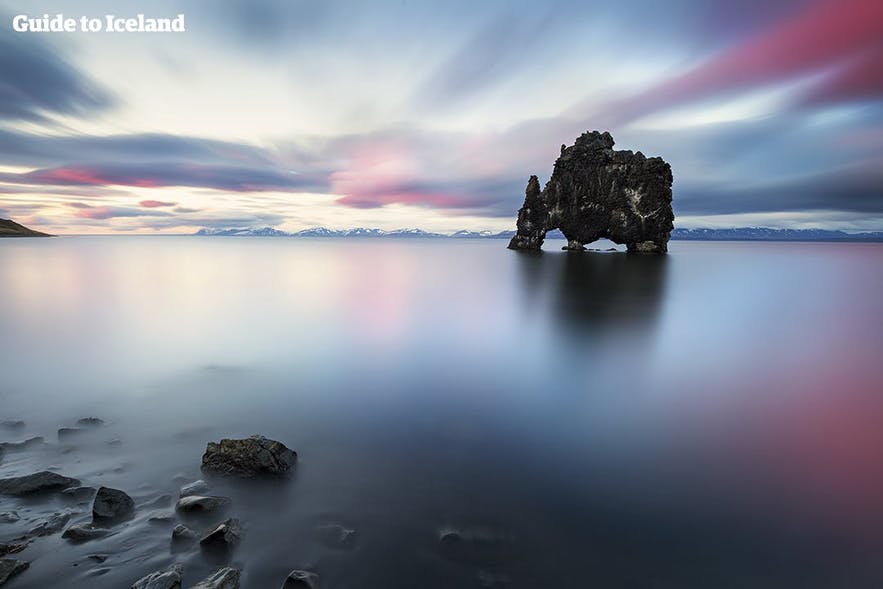 Whether you're an experienced angler looking for a new challenge or a novice looking for a new adventure, Iceland offers incredible fishing experiences for everyone.
Whether you're an experienced angler looking for a new challenge or a novice looking for a new adventure, Iceland offers incredible fishing experiences for everyone.
Book your Iceland vacation today and create memories that will last a lifetime. Or read more about the many natural wonders, cultural experiences, and activities Iceland has for visitors.
Have you already fished in Iceland? Leave a comment below and tell us how it went, and tell us about your biggest catch.


